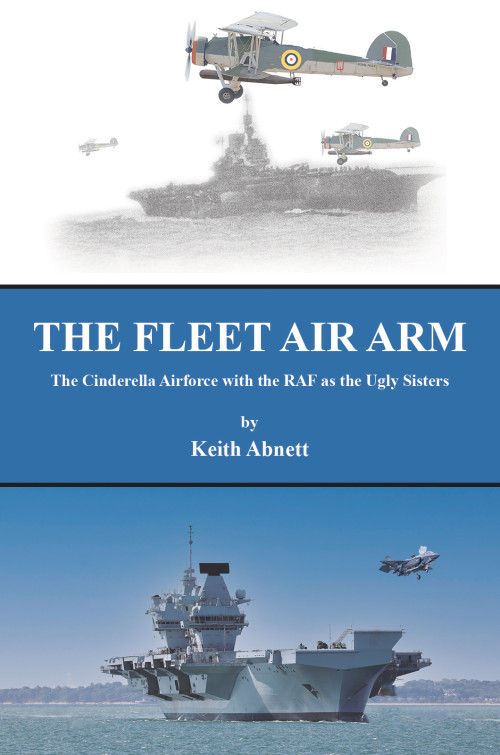
By: Keith Abnett
The Fleet Air Arm
Book Format: Choose an option
Free standard delivery on UK orders over £35
*Available directly from our distributors, click the Available On tab below

By: Keith Abnett
Book Format: Choose an option
Free standard delivery on UK orders over £35
*Available directly from our distributors, click the Available On tab below
Keith Abnett served in the Fleet Air Arm (FAA) from 1961 until 1985, initially as an artificer apprentice reaching the rank of Aircraft Engineering Warrant Officer. He was predominately part of the ‘fixed wing’ element (Sea Vixens, Phantoms and Sea Harriers) maintaining and managing in a variety of engineering capacities. He led the team that maintained the helicopters flown by HRH Prince of Wales, now King Charles III, whilst in the RN. Keith served on five different aircraft carrier types: HMS Ark Royal, Bulwark, Hermes, Illustrious and the mighty ‘Sara’, the USS Saratoga. From a young age and following retirement from the FAA, he has keenly studied both the historical and future developments of the UK’s Naval Air Service.
Keith Abnett has succeeded in outlining the history of Naval Aviation in the United Kingdom in great detail, and to a degree not previously seen in a single work. The Fleet Air Arm (FAA) remains a largely misunderstood force as far as the general public are concerned, and the author has tackled that head-on, writing at length about the rationale behind aircraft carriers plus the operations and events in which the FAA has been involved. The attention to detail is very good throughout and the timeline of FAA operations throughout its existence is fascinating. The central core of the book is the political attitude to the FAA and in particular the fierce inter-service rivalry between the FAA and the Royal Air Force (RAF), something which always emerges with a mixture of emotion and displeasure when members of the two forces talk about each other. In many respects, the book is both a breath of fresh air and a revelation when discussing and explaining the long-embedded reasons for this attitude, which itself has always centred on which service controls the air power debate. It is the emotional aspect to this inter-service rivalry that emerges time and again throughout the book, and given that Keith Abnett had a long and distinguished FAA career this is understandable. However, this has resulted in a sometimes skewed debate – the sub-heading describing the RAF as “The Ugly Sisters” warns the reader what to expect and, as someone who served a long career in the RAF I found this side of the book difficult to read at times. This is certainly the best book there is for anyone who wants to learn the background to the FAA and the trials and tribulations from which it continues to suffer. It would have benefitted from an index, but overall I highly recommend it.
I enjoyed the preview of Keith’s book, here are a few thoughts you are welcome to use in promoting the publication. I wish Keith every success in sharing his hardwork with the world. a full history of the FAA, the men and women, the helicopters and planes, the ships and air stations. What stands this book apart is the exploration of the poor decision making by senior leaders and how the FAA has achieved so much often with so little. Keith manages to join the dots across over 100 years of changes in warfare, technology and politics. ….And of course there are plenty of stories about the heroics of Naval Aviators.
The book is a well-researched comprehensive history of the Fleet Air Arm and Aviation in the Royal Navy from 1918 to present day. Emphasis has been placed on aircraft types both fixed and rotary wing and both wartime and peacetime operations that the Fleet Air Arm engaged in during the 2nd World War, Korean War, Suez, and the Falklands War to nowadays. The Author has built on his extensive experience as an Artificer and has called on other aviator personal experiences and anecdotal evidence to highlight aspects of operating aircraft at sea. It was interesting to read how politics had shaped the direction of Aviation in the Royal Navy and the RAF overtime and is ongoing today with the new generation of aircraft in service. As a research source the book will be ideal for anyone with an interest in Naval Aviation with detailed information on Fleet Air Arm Squadrons and aircraft types operated at Chapter 17 and the Timeline of Actions since 1945 at Chapter 18 are a great source of knowledge. Having spent over thirty years myself as an Artificer in the Fleet Air Arm between 1972 to 2005 I was surprised how much new information I gleaned from this book and would highly recommend it to anyone with an interest in military aviation.
We use cookies on this site to enhance your user experience and for marketing purposes.
By clicking any link on this page you are giving your consent for us to set cookies